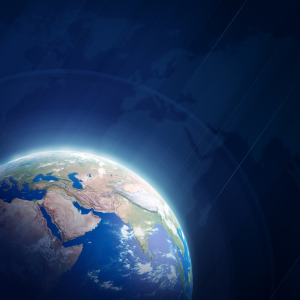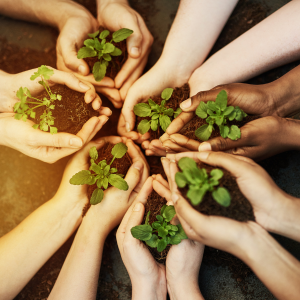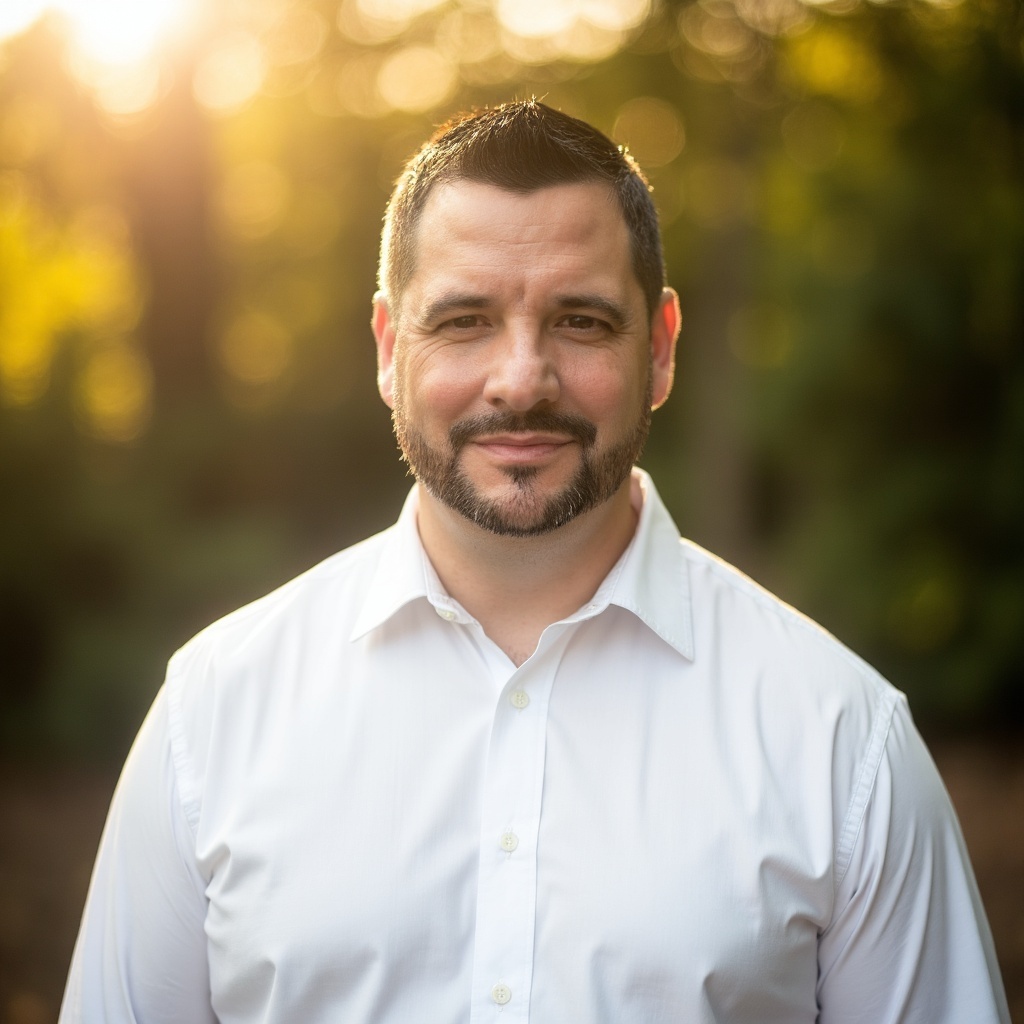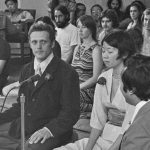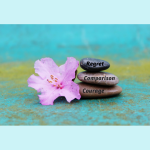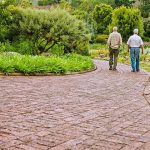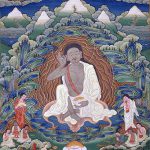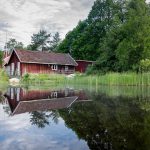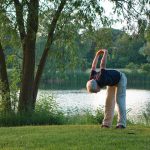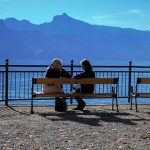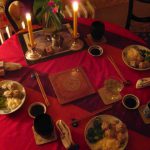Friday
A World Built on Pain: The Call for Healing and Change
By George Cassidy Payne
We live in a world where systems of power and dominance are designed to destroy the very planet that sustains us. These systems, though old in origin, have become more visible than ever before. They are built on extraction, exploitation, and a blind pursuit of progress that disregards the balance of life on Earth. Mother Earth is suffering under the weight of human-made unsustainable practices.
As Thich Nhat Hanh, a renowned teacher of peace and mindfulness, has often said, our connection to the Earth is not some abstract concept but something profound and immediate. To love the Earth is to love ourselves because we are intricately woven into the fabric of life. Yet, despite this deep connection, the structures of our society continue to foster destruction. Economic systems prioritize growth, accumulation, and exploitation, often at the cost of the environment and all of its creatures. The question we must ask is: where does this path lead us? Will our desire for control and comfort continue to erode the very systems upon which we depend?
Civilization, as we know it, is unsustainable. The rise of agriculture over 10,000 years ago marked the beginning of a trajectory where humanity’s relationship with nature became one of domination. We have seen entire species wiped out and ecosystems decimated. Today, 90% of fish populations are depleted, and 80% of old-growth forests have been destroyed. This is the legacy of human progress. We’ve created systems that exploit nature, driven by a desire to conquer and control. But at what cost?
The violence inflicted upon the Earth is not just physical; it’s linguistic and ideological. The discourse surrounding nature and sustainability has been shaped by political and economic forces that treat the natural world as something to be harvested, not a living community to be nurtured. We are not separate from nature; we are part of it. Yet, in our arrogance, we act as though we are above it, consuming without consequence. The truth is clear: without nature, we cease to exist. The buffalo skulls scattered across the Plains are a haunting reminder of what happens when we push too far, too fast, and too greedily.
Our ego has placed itself in direct opposition to the ecological system that sustains all life. The needs of nature must come before the needs of economic systems, but we continue to prioritize growth over balance, and consumption over care. This is a profound injustice — not only to the Earth but to all the creatures that depend on her.
We are dealing with pathological systems — economic, political, and social structures that are broken and destructive by design. These systems perpetuate ecological collapse, social inequality, and environmental degradation. The damage they cause is not an accident; it is the logical outcome of the values that drive them. These are not systems that can be tweaked or reformed; they need to be re-envisioned.
To create a world that is just and sustainable, we must re-imagine power, ecology, and healing. This requires a radical shift — a transformation in how we relate to one another, the Earth, and ourselves.
Reenvisioning Power
Power, as we know it, is often associated with domination, control, and exploitation. We see this in the way political, economic, and social structures perpetuate inequality and environmental harm. These hierarchies place certain groups — usually those with wealth and technological advantage — above others, including the natural world.
True power lies in interconnection, reciprocity, and mutual respect. It arises when we recognize our interconnectedness with all life. Gandhi’s principle of non-cooperation with everything humiliating points us toward an alternative vision of power — one that does not dominate or subjugate but works in harmony with the Earth and one another. Power, in this sense, is not something to be hoarded or controlled. It’s something to be shared, cultivated, and used responsibly for the collective well-being of all.
Reenvisioning Ecology
Ecology, in its current treatment, is often viewed through a narrow lens: nature as something to be exploited, commodified, and used for human gain. We speak of nature as “resources” to be extracted, “capital” to be managed. This extractive relationship has brought us to the brink of ecological collapse — biodiversity loss, deforestation, ocean acidification, and climate change are just a few of the destructive forces at play.
A new ecological vision is required — one that sees nature not as a separate entity to be controlled but as a living, breathing community with which we share space. It’s a worldview that recognizes the sacredness of all life and understands that human flourishing is tied to the health of ecosystems. In this vision, our relationship with the Earth becomes one of stewardship, reciprocity, and respect, grounded in the understanding that the health of the planet directly influences the well-being of all species, including ourselves.
To heal the planet, we must move beyond the extractive model of exploitation and embrace a more holistic, regenerative approach that centers on sustainability, biodiversity, and the restoration of natural cycles.
Reenvisioning Healing
Healing is often seen as a personal journey — a process of mending broken bodies or minds. But true healing extends beyond the individual. It encompasses communities, ecosystems, and the Earth itself. Healing involves confronting the deep wounds caused by centuries of exploitation, oppression, and violence. It requires reconciliation — not just between people but between humanity and the Earth.
Healing begins by acknowledging the trauma caused by our systems — systems that perpetuate environmental destruction, social inequality, and violence. It involves the work of repair, restoration, and regeneration. Just as individuals must heal from their wounds, societies and ecosystems must heal from the violence of extraction, colonization, and environmental degradation.
This process must also be inclusive, recognizing the voices and needs of marginalized communities — whose struggles are often intertwined with the environmental crisis. Communities of color, indigenous peoples, and low-income populations bear the brunt of both social injustice and ecological harm. Their healing is integral to the broader healing of the world.
The Power of Music and Local Action
One of the most powerful tools in this journey toward a nonviolent world is music. Music transcends barriers and speaks directly to the heart. In the fight for social and ecological justice, music serves as a powerful tool for expression, healing, and resistance. We must give voice to those whose stories have been silenced by the dominant narrative of violence and exploitation. Music becomes an act of resistance, a means of resisting the forces that seek to divide us and disconnect us from one another and the Earth.
However, music alone is not enough. We must also recognize the importance of local action. While large-scale movements are necessary, it’s the everyday actions, rooted in communities and local networks, that lay the foundation for lasting transformation. These small, collective actions have the potential to create a ripple effect — a nonviolent contagion that spreads from the grassroots to the global.
Challenging the Myth of Military Effectiveness
One of the most enduring myths that sustain these destructive systems is the myth of military effectiveness — the belief that military power is the ultimate means of achieving peace and security. But the truth is, that violence breeds more violence, and military solutions often exacerbate the very crises they are meant to resolve. Revolution does not always have to be violent. We can challenge this myth by demonstrating alternative forms of power — forms grounded in nonviolence, compassion, and cooperation.
True power, as Hannah Arendt wisely observed, is not violence; it is the ability to act in concert with others toward a common goal. Power lies in collective action, solidarity, and the strength of a community united in nonviolent resistance.
Contemporary Faith-Based Activism
Faith-based activism offers another lens through which to view the transformative potential of nonviolence. Rooted in compassion, justice, and a deep sense of moral responsibility, faith-based movements have often been at the forefront of social change. From the civil rights movement to climate justice, faith communities have played a crucial role in challenging injustice and advocating for a more sustainable world.
As we work to build a nonviolent, sustainable future, we must look to these faith-based activists who are mapping a nonviolent contagion — a global network of compassion, justice, and solidarity. This movement is grounded in the belief that true peace can only be achieved when all beings are respected and honored.
Conclusion
We stand at a critical moment in human history. The systems that govern our lives are broken, and the Earth cries out for healing. The path we take now will determine the future of our planet and all the life it sustains. The time for change is now. But this change must come from within. We must act out of love — for the Earth, for one another, and future generations. Only through radical transformation — grounded in nonviolence, respect for nature, and collective action — will we begin to heal the world and ourselves.
The change we need cannot come from the same systems that created the problem. We must, as Gandhi said, “be the change we wish to see in the world.”
***
George Cassidy Payne is a writer, philosopher, and advocate based in Rochester, NY. His work delves into themes of spirituality, social justice, philosophy, and the human condition. Known for his introspective essays, evocative poetry, and thought-provoking commentary, George contributes to various publications and platforms, offering a distinctive perspective on contemporary issues and timeless questions. He lives and works as a counselor in Irondequoit, NY.
Entries filed under Opinion Pieces
Friendliness and Forgiveness – HIGHLIGHT
Thoughts on loving-kindness and our ability to forgive by Elaine Yuen This is what should be done by those who are skilled in seeking the good, having attained the way of peace: They should be able, straightforward, and upright, easy to speak to, gentle, and not proud, Content and easily ... continuePosted July 4, 2018 by CGH
Regret, Comparison, Courage – HIGHLIGHT
Reflections on some feelings and mental habits that we all experience in our everyday lives. by Susan Firer A while back some topics came to mind: regret, comparison, and courage. I’m going to make an assumption that all of us are probably intimately familiar with the first two, ... continuePosted June 28, 2018 by CGH
Eavesdropping on the Elderly – HIGHLIGHT
Lessons learned by listening to our elders by Anne-Marie Keppel Not all elderly are cascading fountains of wisdom. But simply because they are old and they see and do things differently than those of other ages, little life-altering gems often bubble up. New on the job as an Outings ... continuePosted May 31, 2018 by CGH
Holding the Middle Ground – HIGHLIGHT
Our paradoxical experience of space, time, and being in the human realm by Larry Barnett The human experience is a paradox; our minds are infinite, as vast as the universe itself, while our bodies are finite, grains of sand tossed by the tides and winds of time. We ... continuePosted May 27, 2018 by CGH
The Waiting Game, Part Two – HIGHLIGHT
Learning to see an eye-drop treatment regimen as an opportunity to practice by William Larsen As I relaxed my protest, I found I could drop much more quickly into a calm inner space, surrendering into the sofa, allowing the wetness of the eye drops to wash through me. Splash, ... continuePosted March 15, 2018 by CGH
The Waiting Game, Part One – HIGHLIGHT
Making the most out of the time of your life, by surrendering to opportunities for practice by William Larsen There are some who say “practice makes perfect.” That may be, but after forty years on the meditation cushion, all I can say is that I’m still a long way ... continuePosted March 13, 2018 by CGH
Remembering Milarepa Day – HIGHLIGHT
Reflections on the preciousness of group practice and the inspiration of Milarepa’s songs of enlightenment by Carol Henderson In the early days of my connection with Shambhala Buddhism, I happened to drop by the local center in Seattle on what turned out to be Milarepa Day, the first ... continuePosted February 25, 2018 by CGH
Death in Advance, Part Two – HIGHLIGHT
How our viewpoint on life can change through the practice of contemplating death by Anne-Marie Keppel I was overjoyed when I recently read in Sakyong Mipham Rinpoche’s new book, The Lost Art of Good Conversation, instructions for how to contemplate our last breath on our deathbed. He asks, “What do you need ... continuePosted February 7, 2018 by CGH
Death in Advance, Part One – HIGHLIGHT
We so often avoid thinking of our own death, but what if we took a different view? by Anne-Marie Keppel From the womb, the baby opened her eyes, and saw through stretched skin patches of light. So contrary to the darkness when her eyes were closed. And when ... continuePosted February 5, 2018 by CGH
In Appreciation of Quiet – HIGHLIGHT
A few thoughts on the delights and sufferings associated with the sounds around us by Larry Barnett I like quiet. I don’t mean the complete silence of any sound whatsoever, but the quiet of the natural world. I find the sound of leaves rustling in the wind comforting. ... continuePosted January 8, 2018 by CGH
Beyond Filters – HIGHLIGHT
How to meet our young adult and teenage children as and where they are by Anne-Marie Keppel What is the ultimate goal we are seeking regarding educating and caring for our children, in our sangha and on the planet? The truth is, at present, they instead need to educate ... continuePosted December 17, 2017 by CGH
The Tiger Has Teeth – HIGHLIGHT
A Shambhala practitioner brings her understanding of Meek to the challenges and realities of sexual harassment by Allison Conant When considering the Shambhala Dignities, I was initially struggling to make sense of connecting the word Meek with Tiger. I have always associated the tiger with beauty, ferocity, unabashed ... continuePosted December 11, 2017 by CGH
Grandfather Yoga – HIGHLIGHT
Musings on aging, youth, and the practice of yoga by Larry Barnett When I was eight both of my grandfathers were sixty, which in 1956 actually was old. They were already stoop-shouldered, and mostly liked to sit shirtless in lawn chairs in the hot sun for hours, smeared ... continuePosted November 27, 2017 by CGH
We Need to Talk – HIGHLIGHT
by Jacqueline Larson A couple weeks ago I was cleaning my office and listening to CBC’s Q. Tom Power was interviewing comedian and podcaster Marc Maron on what makes up a good interview. I wasn’t familiar with Maron but when he spoke about the depth of observations and ... continuePosted November 25, 2017 by CGH
Life is a Ceremony – HIGHLIGHT
Contemplating the power and meaning of our everyday rituals by Susan Firer “Life is a ceremony” says Chogyam Trungpa. Sakyong Mipham discusses this in the eighth chapter of his book “The Shambhala Principle.” According to the Sakyong: “Through our view, contemplation, and activity, every day we are transforming commonly ... continuePosted November 23, 2017 by CGH
![]() RSS feed for the Opinion Pieces category
RSS feed for the Opinion Pieces category
View all posts from authors in Opinion Pieces: jillian_johnson

